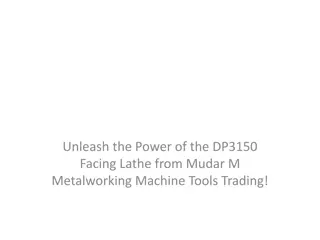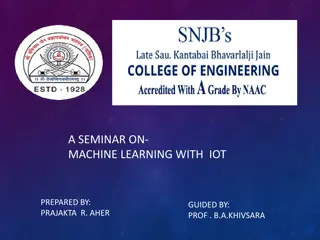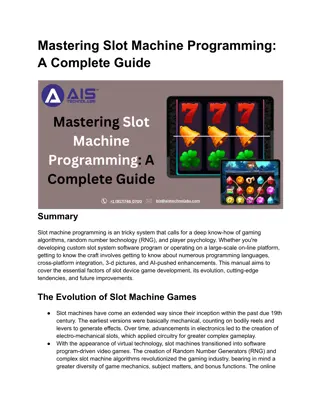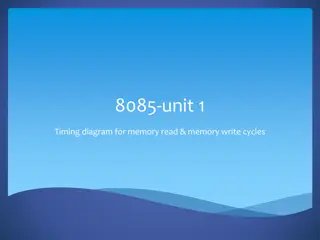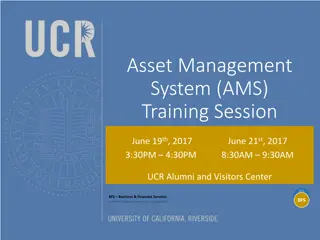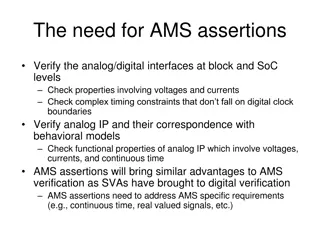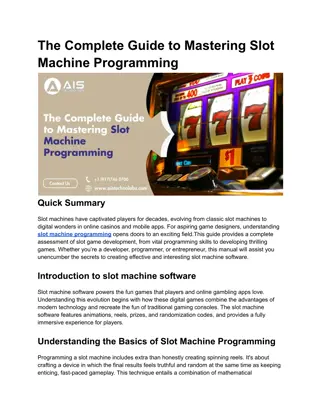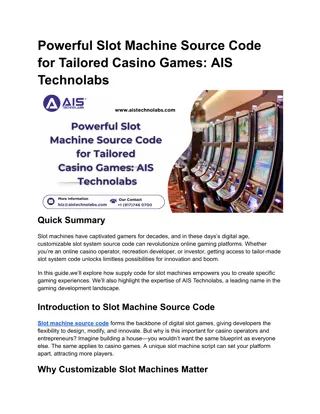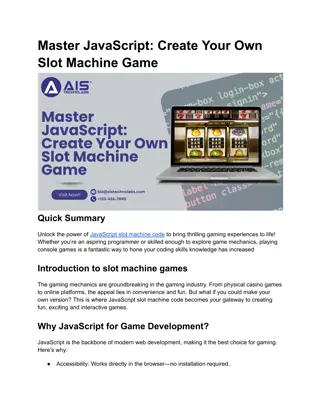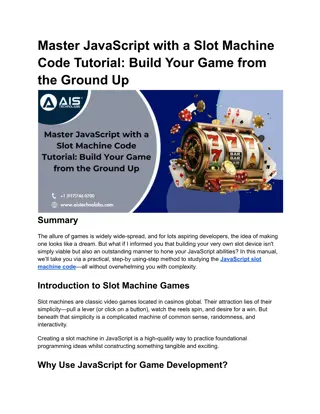
Understanding Human Factors Engineering in Design
Human Factors Engineering (HFE) focuses on designing objects and procedures that cater to human capabilities, limitations, and characteristics. It aims to increase efficiency, effectiveness, and safety while considering human needs and values. HFE involves studying human responses to the environment, ensuring machines serve humans, and incorporating scientific testing of human data in the design process. This field has a rich history dating back to the early 1900s, with pioneers like Frank and Lilian Gilbreth paving the way for designing workstations for the disabled.
Uploaded on | 0 Views
Download Presentation

Please find below an Image/Link to download the presentation.
The content on the website is provided AS IS for your information and personal use only. It may not be sold, licensed, or shared on other websites without obtaining consent from the author. If you encounter any issues during the download, it is possible that the publisher has removed the file from their server.
You are allowed to download the files provided on this website for personal or commercial use, subject to the condition that they are used lawfully. All files are the property of their respective owners.
The content on the website is provided AS IS for your information and personal use only. It may not be sold, licensed, or shared on other websites without obtaining consent from the author.
E N D
Presentation Transcript
King Saud University College of Engineering IE 341: Human Factors Engineering Fall 2016 (First Semester 1437-1438) Chapter 1. Introduction Prepared by: Ahmed M. El-Sherbeeny, PhD 1
Human Factors: Overview Successful design entails what man: Needs Wants (desires) Can use Human factors investigated by designers: Anthropometry (Human physical size, limitations) Physiology: human body, Reactions (hearing, seeing, touching, etc.) Functions Limitations Capabilities Ergonomics ( doing vs. anthropometry: being ) dynamic interaction of operator and machine Psychology: influence of mental conditions Others: social, climate, religion, etc. 2
Cont. Human Factors: Overview Objectives of Human Factors (HF): o Increase work efficiency Increase effectiveness of work Increase convenience and ease of use of machines Increase productivity Decrease errors o Study influence of design on people o Change designs to suit human needs, limitations o Increase human values: Increase safety Increase comfort Increase job satisfaction Decrease fatigue and stress Increase quality of life 3
Human factors, definitions Definition 1: o Systematic application of information about human: Capabilities, limitations, and characteristics to the design of: objects and procedures that people use, and the environment in which they use them Definition 2: o HF discovers and applies information about human: Behavior, abilities, limitations, other characteristics to the design of: tools, machines, systems, jobs, tasks, environments for: productive, safe, comfortable, effective human use 4
Human Factors: Characteristics HF involves study of: o Human response to environment o Response as a basis for design, improvements Characteristics of HF: o Machines must be built to serve humans (not opp.) o Design must take human differences into account o Designs influence humans o Design process must include data and calculations o Human data must be tested scientifically o Humans and machines are related o NOT just check lists and guidelines o NOT: using oneself as model for design o NOT just common sense 5
Human Factors: History (US) Early 1900 s: Frank and Lilian Gilbreth: Design of workstations for disabled (e.g. surgery) After WWII (1945): HF profession was born 1949: HF books, publications, conferences, e.g.: HF in Engineering Design, 1949 HF Society (largest HF professional group), 1957 1960-80: emphasis moved from military to industry: Pharmaceuticals, computers, cars, etc. 1980-90: HF in PC revolution ergonomically-designed equipment, software HF in the office Disasters caused due to HF considerations e.g. Chernobyl, Soviet Union, 1986 HF in forensics (injury litigations, defective designs) >1990 s: Medical devices, devices for elderly OSHA ergonomic regulations 6
Human Factors: Profession HF Society members: o Psychology: o Engineering: 45.1% 19.1% People performing HF work (in general) o Business (private): o Government: o Academia: 74% 15% 10% 7
Human-Machine Systems System (Defn): o Entity that exists to carry out some purpose o Components: humans, machines, other entities o Components must integrate to achieve purpose (i.e. not possible by independent components): Find, understand, and analyze purpose Design system parts System must meet purpose Machine (Defn): o Physical object, device, equipment, or facility o used to perform an activity Human-Machine system (Defn): o 1 Human + 1 physical component o Interaction using given input/command o Result: desired output o e.g. man + nail + hammer to hang picture on wall o See Figure 1-1, pp. 15 (Sanders and McCormick) 8
Cont. Human-Machine Systems Types of HM systems: o Manual systems: operator + hand tools + physical energy o Mechanical systems (AKA semiautomatic systems): operator (control) + integrated physical parts e.g. powered machine tools o Automated systems: little or no human intervention (e.g. Robot) Human: installs programs, reprograms, maintains, etc. Consider broomstick vs vacuum vs RoombaTM 9
HM System Characteristics Systems are purposive o Systems have 1 objective Systems can be hierarchical o Systems may have subsystem levels (1, 2, etc.) Systems operate in environment (i.e. inside boundary) o Immediate (e.g. chair) o Intermediate (e.g. office) o General (e.g. city) Components serve functions o Sensing (i.e. receiving information; e.g. speedometer) o Information storage (i.e. memory; e.g. disk, CD, flash) o Information processing and decision o Action functions (output) Physical control (i.e. movement, handling) Communication action (e.g. signal, voice) 10
HM System Characteristics Information Storage Action Function (physical control or communication) Information processing and decision Sensing (information receiving) Info input Info output 11
Cont. HM System Characteristics Components interact o components work together to achieve a goal o components are at lowest level of analysis Systems, subsystems, components have I/O o I: input(s) o O: output(s) o O s of 1 system: can be I s to another system o I s: Physical (materials) Mechanical forces Information 12
Types of HM Systems Closed-loop systems o Require continuous control o Require continuous feedback (e.g. errors, updates, etc.) o e.g. car operation Open-loop systems o Need no further control (e.g. car cruise-control) o Feedback causes improved system operation 13
System Reliability Defn: probability of successful operation Measure #1: o success ratio o e.g. ATM gives correct cash: 9999 times out of 10,000 Rel. = 0.9999 o Usually expressed to 4 d.p. Measure # 2: o mean time to failure (MTF) o i.e. # of times system/human performs successfully (before failure) o Used in continuous activity 14
System Rel.: Components in Series Successful operation of system Successful operation of ALL components (i.e. machines, humans, etc.) Conditions: o Failure of 1 component failure of complete system! o Failures occur independently of each other Rel. of system = Product of Rel. of all components e.g. System has 100 components o components all connected in series o Rel. of each component = 99% o Rel. of system = 0.365 (why?) o i.e. system will only work successfully: 365 out of 1,000 times! o Conclusions: more components less Rel. Max. system Rel. = Rel. of least reliable component least Rel. component is usually human component (weakest link) In reality, system Rel. least Rel. component 15
System Rel: Components in Parallel 2 components perform same functions o AKA: backup redundancy (in case of failure) System failure failure of ALL components e.g. System has 4 components o components connected in // o Rel. of each = 0.7 o System Rel. = 1 (1-Relc1)(1-Relc2)(1-Relc3)(1-Relc4) = 0.992 o Conclusions more components in // higher Rel. o Note, Rel. with time (e.g. 10-year old car vs. new) 16


